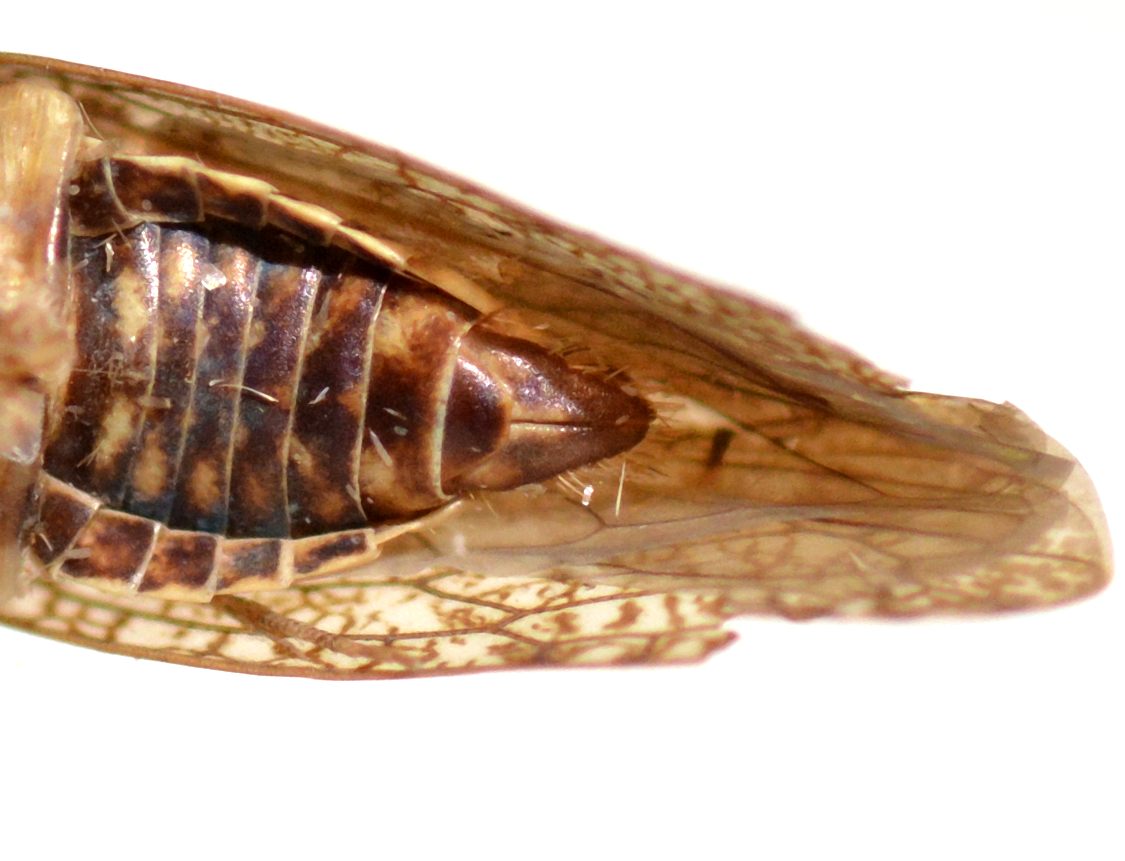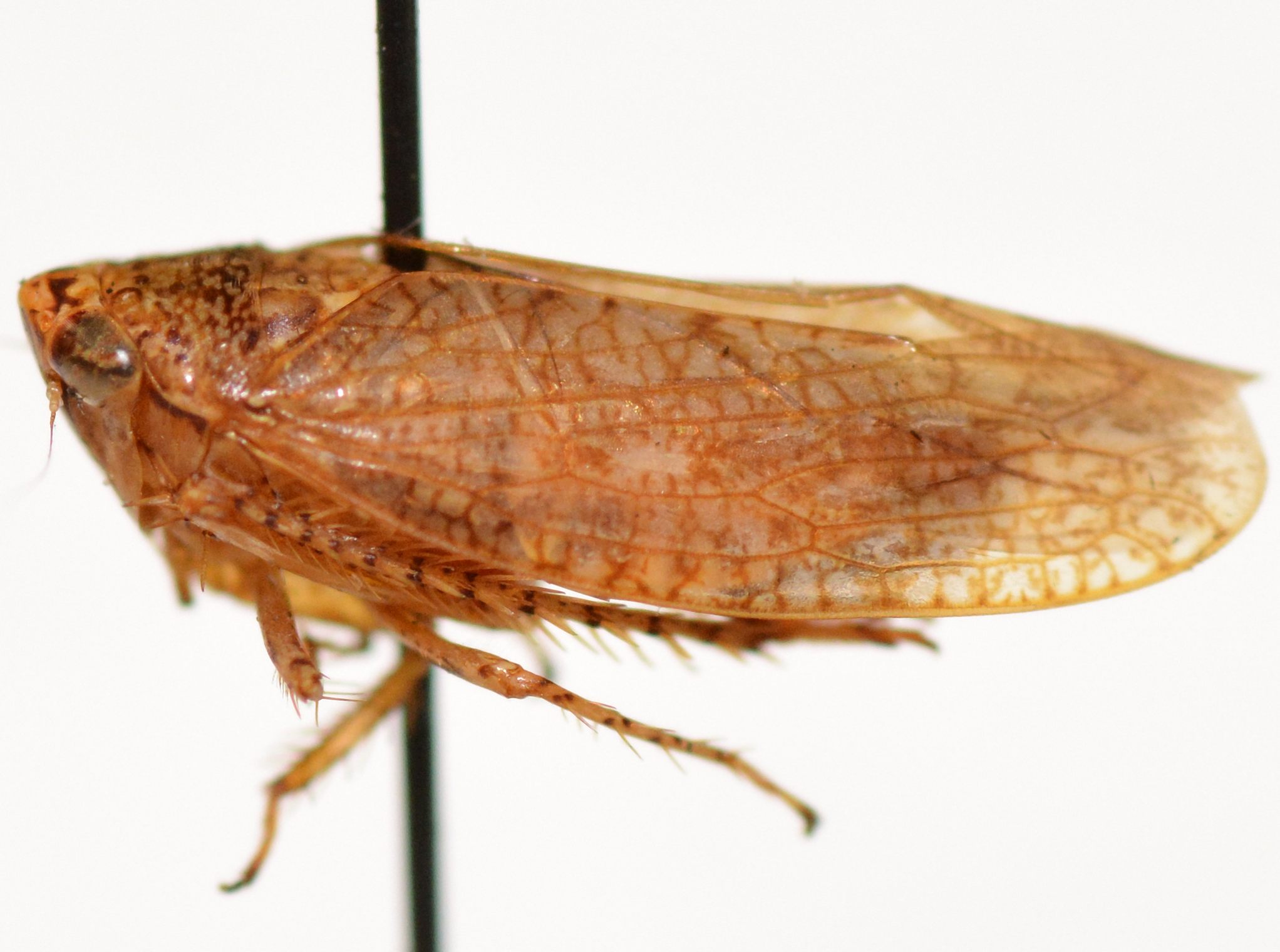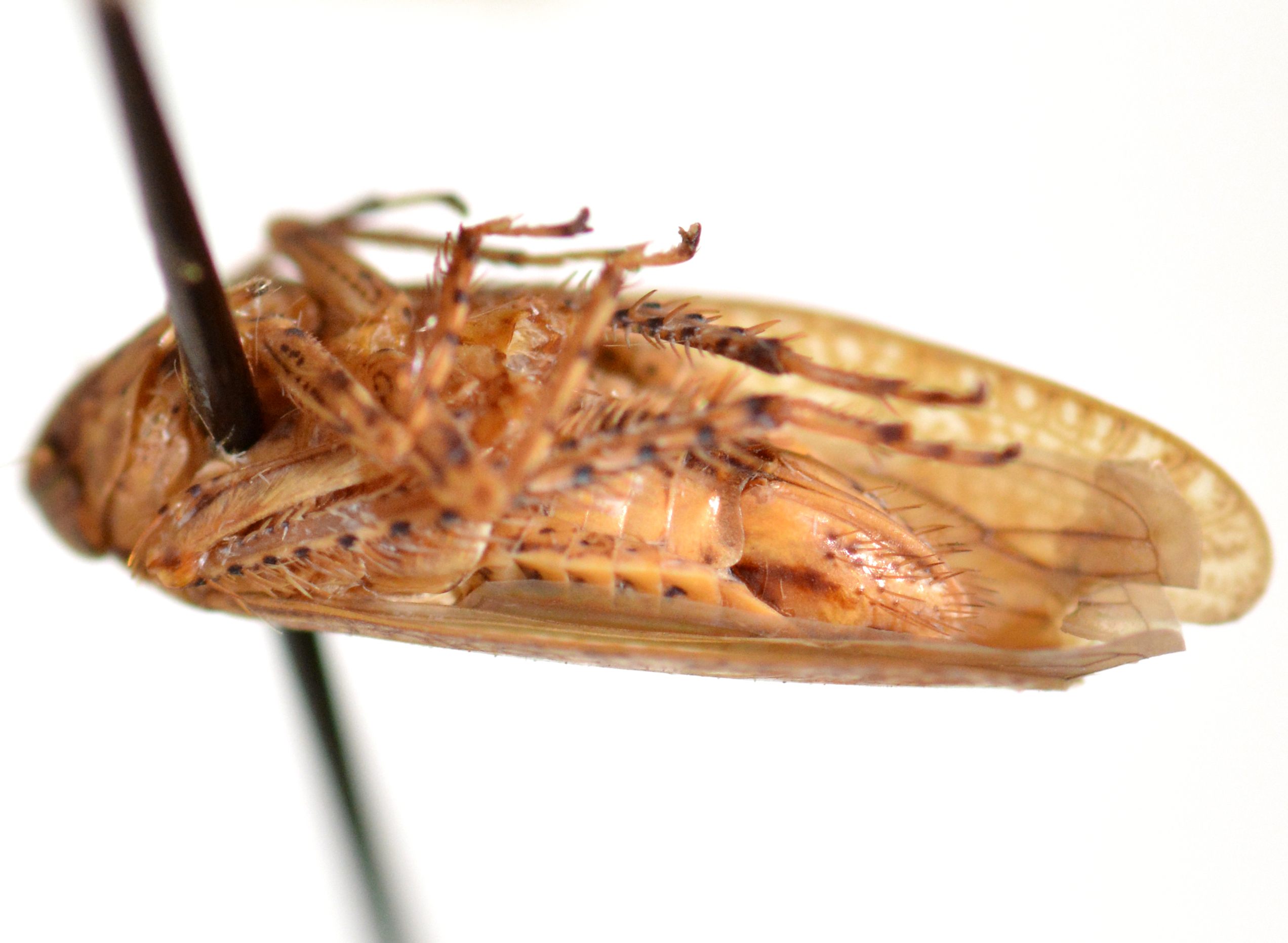Description: A large reddish-brown species, with adults 9.0-10.0 mm long. The entire body and wings have a dense reticulated mesh-like dark brown pattern, extending onto the face. The vertex is bluntly angled and has a tan to white tip, in front of a conspicuous, irregular and broken transverse dark brown to fuscous band between the eyes; there are typically two fuscous spots in front of the band on the vertex. The anterior portion of the pronotum has dark vermiculate markings, and the wings are heavily mottled with chestnut-brown. The female pregenital sternite is two to three times as wide as long and has a narrow but deep medial incision, extending about halfway to the anterior margin; the posterior sides of the notch end in a somewhat sharp tooth, with the lateral posterior angles of the sternite broadly rounded. The lateral margins of the pregenital sternite are also almost parallel. The pregenital sternite is mostly a light brown to tan color, with some darker mottling near the notch. The male subgenital plates are close to one another, without a noticeably gap between them; together, they are triangular in shape and are long and narrow with broad, blunt and rounded apices. (DeLong & Hershberger, 1948; Crowder 1952)
For diagrams of this species, see: Dmitriev. For more images of individuals that have been identified as this species, see: BG. |

 »
»




 »
»


